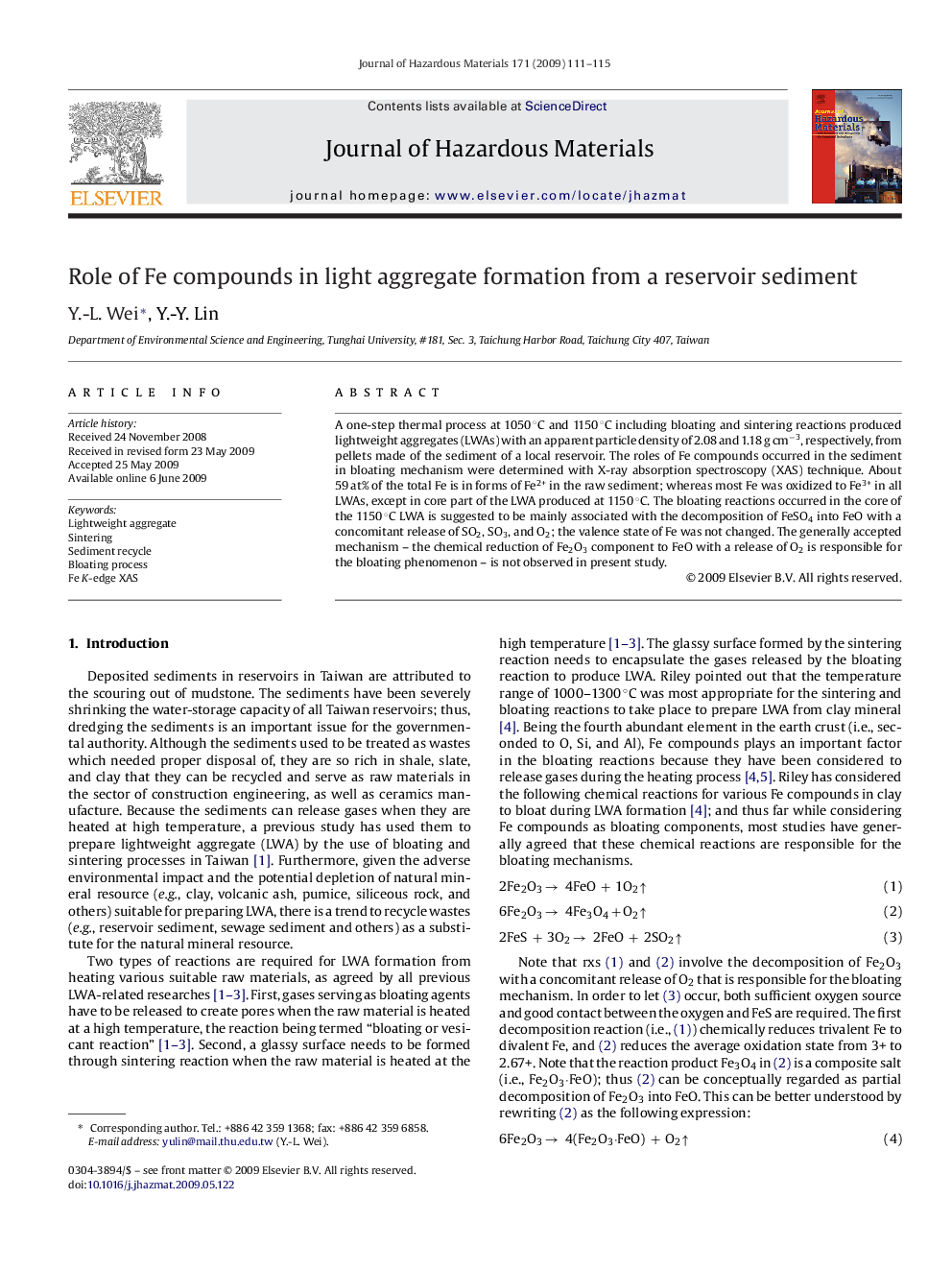| Article ID | Journal | Published Year | Pages | File Type |
|---|---|---|---|---|
| 581110 | Journal of Hazardous Materials | 2009 | 5 Pages |
Abstract
A one-step thermal process at 1050 °C and 1150 °C including bloating and sintering reactions produced lightweight aggregates (LWAs) with an apparent particle density of 2.08 and 1.18 g cmâ3, respectively, from pellets made of the sediment of a local reservoir. The roles of Fe compounds occurred in the sediment in bloating mechanism were determined with X-ray absorption spectroscopy (XAS) technique. About 59 at% of the total Fe is in forms of Fe2+ in the raw sediment; whereas most Fe was oxidized to Fe3+ in all LWAs, except in core part of the LWA produced at 1150 °C. The bloating reactions occurred in the core of the 1150 °C LWA is suggested to be mainly associated with the decomposition of FeSO4 into FeO with a concomitant release of SO2, SO3, and O2; the valence state of Fe was not changed. The generally accepted mechanism - the chemical reduction of Fe2O3 component to FeO with a release of O2 is responsible for the bloating phenomenon - is not observed in present study.
Keywords
Related Topics
Physical Sciences and Engineering
Chemical Engineering
Chemical Health and Safety
Authors
Y.-L. Wei, Y.-Y. Lin,
